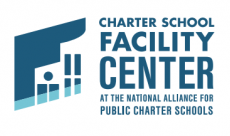Bank loans can be attractive sources of financing for charter schools. They have been used primarily for short-term, early-stage acquisition, construction, and tenant improvement financing. Bank financing is generally shorter term due to certain capital reserve requirements banks are subject to as regulated institutions. These shorter-term loans are often interest-only with full payment of principal due at maturity. Terms will vary depending on the loan product, with acquisition and construction financing generally in the two-to-three-year maturity range. Interest rates are more likely to be variable, usually priced at a spread to a particular financing index, such as the prime interest rate, LIBOR, or U.S. Treasuries. These short-term, variable rates are often lower than the fixed rates offered by CDFIs, which can result in interest savings for schools, but they also entail interest rate risk. If underlying market rates rise, the interest rate the charter school pays will rise as well.
While generally short-term lenders, some banks and credit unions provide partially-amortizing mini-permanent financing in the five-to-seven year maturity range, with interest rates that can be either fixed or variable. Some also provide long-term, fixed-rate financing, either through direct loans or the purchase of private placement bonds.
At least ten different banks and credit unions have provided facilities debt to charter schools in Idaho, including: Bank of America Merrill Lynch, Bank of Idaho, Banner Bank, CapEd Credit Union, City First Bank of DC, D.L. Evans Bank, Idaho Central Credit Union (ICCU), Vectra Bank Colorado, US Bank, and Zions Bancorporation.
Bank loans are secured by a first lien on the project real estate and the school’s revenues. Banks have fairly stringent underwriting criteria in terms of debt service coverage and loan-to-value ratios. Debt service coverage requirements are typically 1.2x and above. Loan-to-value requirements vary but are generally in the 70% to 80% range, in comparison to 90% for most CDFI financing sources and above 100% for long-term bond sources.
Related Articles in Undertsanding your Needs:
- Facility Refinancing: Preparation & Solicitation
- Assembling Your Facility Refinancing Team
- Facility Refinancing Guide to Underwriting
- Facility Refinancing: Credit Approval, Rating, and Marketing
- Facility Refinancing Guide to Closing
- Facility Refinancing Guide to the Bond Market
- Facility Refinancing Guide to State Credit Enhancement
- Facility Refinancing Guide to Philanthropically-Enhanced Funds, Equitable Facilities Fund
- Facility Refinancing Guide to the CDFI Bond Guarantee Program
- Facility Refinancing Guide to Community Development Financial Institutions
- Facility Refinancing Guide to Philanthropically-Enhanced Funds, Facilities Investment Funds
- Facility Refinancing Guide to Replacement and Reporting
Legal Disclaimer:
Nothing in this material should be construed as investment, financial, brokerage, or legal advice. Moreover, the facts and circumstances relating to your particular project may result in material changes in the processes, outcomes, and expenses described herein. Consult with your own professional advisors, including your financial advisors, accountants, and attorneys, before attempting to consummate any transaction described in this material.

